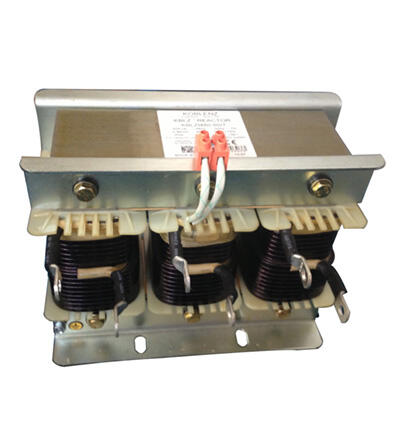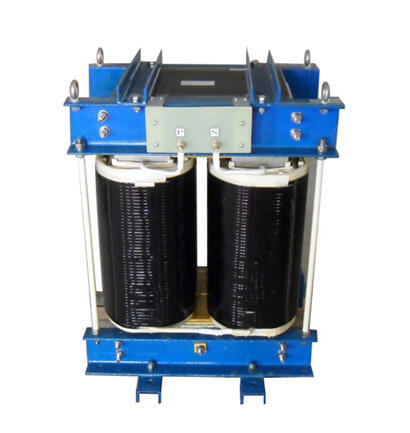Understanding Power Electronics: Input and Output Reactor Applications
In the world of power electronics and electrical systems, reactors play a crucial role in maintaining power quality and protecting equipment. Both input reactors and output reactors serve distinct purposes in variable frequency drive (VFD) applications, yet many engineers and facility managers struggle to determine which type best suits their needs. This comprehensive guide will explore the fundamental differences between these two types of reactors, their specific applications, and help you make an informed decision for your system.
The Fundamental Role of Reactors in Power Systems
Core Functions of Input Reactors
Input reactors, also known as line reactors, are installed on the input side of VFDs and other power electronic devices. Their primary purpose is to protect the equipment from power line disturbances and reduce harmonic distortion flowing back to the power source. By providing impedance between the power source and the drive, input reactors help smooth current flow and reduce the impact of voltage spikes.
These devices act as a buffer between your facility's power system and the VFD, effectively reducing harmonic distortion that could otherwise affect sensitive equipment throughout your facility. Input reactors also help extend the life of DC bus capacitors by limiting inrush current during drive startup.
Essential Functions of Output Reactors
Output reactors, or load reactors, are installed between the VFD and the motor. Their main function is to protect the motor from potentially harmful effects of the VFD's high-frequency switching. They help reduce the rate of voltage change (dv/dt) and minimize common-mode voltage issues that can lead to premature motor failure.
Additionally, output reactors can help mitigate cable charging current issues in long motor leads, making them particularly valuable in applications where the distance between the drive and motor is substantial. They also reduce electromagnetic interference (EMI) and help protect the motor windings from voltage spikes.
Technical Characteristics and Performance Impact
Input Reactor Performance Metrics
Input reactors are typically rated by their impedance value, usually expressed as a percentage. Common values range from 3% to 5%, with higher impedance providing greater harmonic mitigation but also resulting in a larger voltage drop. The selection of impedance value depends on the specific application requirements and the level of harmonic distortion present in the system.
These devices can significantly reduce total harmonic distortion (THD) levels, often bringing them within IEEE 519 compliance standards. By limiting the rate of current change, input reactors also help protect rectifier components in the drive from damage due to rapid current fluctuations.
Output Reactor Specifications
Output reactors are designed to handle the high-frequency content of the PWM waveform produced by modern VFDs. They are typically rated based on their ability to reduce dv/dt and their current-carrying capacity. The impedance values for output reactors often range from 2% to 5%, depending on the application requirements.
When selecting an output reactor, considerations must include the carrier frequency of the drive, motor cable length, and the voltage rating of the motor insulation system. The reactor must be sized appropriately to handle both the fundamental frequency current and the high-frequency components of the drive output.
Installation and Application Considerations
Input Reactor Installation Guidelines
Input reactors should be installed as close as possible to the drive input terminals to maximize their effectiveness. Proper ventilation is essential as these devices generate heat during operation. The installation location should also consider accessibility for maintenance and inspection.
When installing input reactors, it's crucial to ensure proper sizing of the electrical connections and adequate support for the reactor's weight. The installation should comply with all relevant electrical codes and manufacturer specifications to ensure safe and reliable operation.
Output Reactor Implementation Best Practices
Output reactors require careful consideration of their placement in relation to both the drive and motor. They should be installed as close to the drive output terminals as practical, especially in applications with long motor leads. Proper grounding is essential to ensure effective mitigation of common-mode voltages.
The installation must account for the additional voltage drop across the reactor, which may affect motor performance at high speeds. Proper cooling and ventilation are also critical considerations, as output reactors can generate significant heat during operation.

Making the Right Choice for Your Application
When to Choose Input Reactors
Input reactors are particularly beneficial in facilities with weak power systems or those experiencing significant harmonic distortion. They are essential when multiple drives are connected to the same power source, or when the power system is subject to frequent disturbances such as voltage sags or transients.
Consider implementing input reactors when your facility needs to meet harmonic compliance standards, protect sensitive equipment from power quality issues, or extend the life of drive components through better current limiting and harmonic mitigation.
Optimal Applications for Output Reactors
Output reactors are crucial in applications with long motor leads, typically exceeding 50 feet. They are also essential when using motors that are not specifically rated for inverter duty or in situations where multiple motors are connected to a single drive output.
These devices are particularly important in applications where motor bearing currents are a concern, or where EMI issues need to be addressed. Industries with strict electromagnetic compatibility requirements often benefit from the additional protection provided by output reactors.
Frequently Asked Questions
Can I use both input and output reactors simultaneously?
Yes, you can use both types of reactors in the same system. In fact, some applications benefit from having both input and output reactors installed. The input reactor will handle power quality issues from the supply side, while the output reactor protects the motor and handles long lead issues.
How do I determine the correct reactor size for my application?
Reactor sizing depends on several factors including the drive horsepower rating, system voltage, current requirements, and specific application needs. It's recommended to consult with a qualified engineer or the reactor manufacturer to ensure proper sizing based on your specific requirements and system characteristics.
What maintenance do reactors require?
Reactors generally require minimal maintenance. Regular visual inspections for signs of overheating or physical damage, checking electrical connections for tightness, and keeping the units clean and well-ventilated are typically sufficient. However, always follow the manufacturer's specific maintenance recommendations for your particular model.

